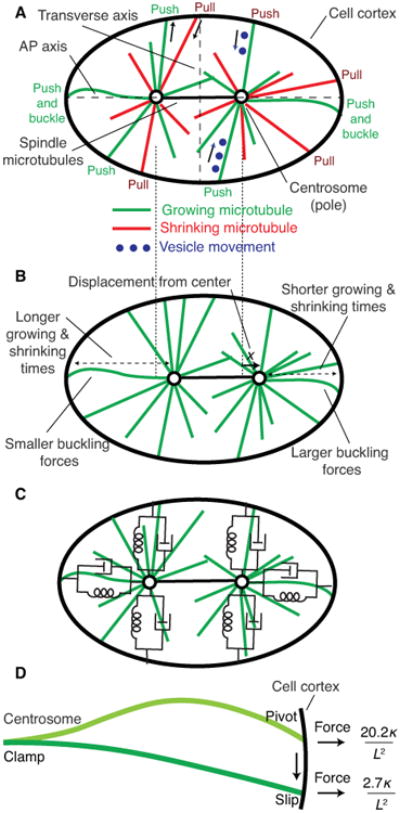Figure 3. Models of spindle centering.

A Three force-generating mechanisms operating on astral microtubules: (i) pushing by microtubules, shown in green, growing against the cell cortex, (ii) pulling by microtubules, shown in red, shortening while maintaining contact with the cortex, and (iii) hydrodynamic force generated by movement of vesicles, shown in blue, moving towards the center of the aster. The pushing and vesicles forces are centering, meaning that they move the aster and the spindle towards the cell center. The pulling forces can be centering or anti-centering depending on the details of cell shape and cortical attachment. B Origins of length-dependent pushing forces. Displacement of the spindle to the right leads to larger leftwards restoring force because (i) the microtubules spend less time growing and shrinking from the right-hand cortex, and (ii) the buckling forces are larger for the shorter microtubules on the right. C Spring and dashboard model of the spindle showing the equivalent mechanical circuit for pushing microtubule arrays. D Microtubule buckling after contact with the cortex (show cortex). Upper microtubule: clamped at the aster center and fixed at the cortex (but free to pivot). Lower microtubule: clamped at the aster center and free to slide along the cortex. If there is friction at the cortex, the microtubule will initially buckle as shown in the upper part, but then transition to the shape shown below after sliding.
